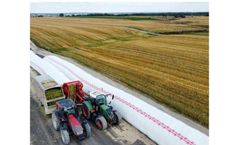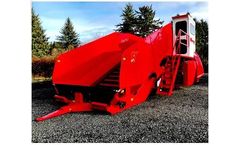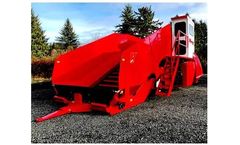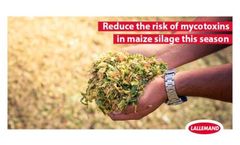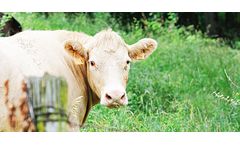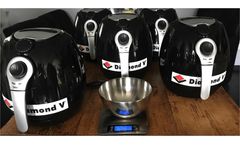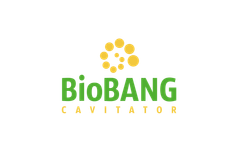Refine by
Corn Silage Articles & Analysis
48 articles found
This limits the types of forage crops that can be reliably grown and harvested for silage. While many U.S. dairies rely heavily on corn silage, Canadian dairies often depend on legume- grass silage mixes, barley silage, or triticale that are better suited to cooler climates and earlier cuts. ...
New innovations can produce higher-quality feed at a lower cost. This is particularly true for silage, a preserved forage made from energy-rich crops such as corn, alfalfa, sorghum, or grass that undergo fermentation under anaerobic conditions. ...
However, dairy farmers are increasingly turning to high moisture corn silage, specifically snap I age/earl age, due to its high energy content and easy digestibility. ...
Dairy farmers are bagging silage to reduce spoilage by up to 30%, increase nutrient value and milk production, improve herd health, and potentially earn environmental carbon credits. For dairy farmers, “good feed promotes good production” is a guiding principle that has a direct cause-and-effect impact on milk tank volume. As a result, providing the highest quality feed is crucial ...
Cattlemen are increasingly turning to bagged silage for flexible feed management. The most fundamental beef cow feeding strategy remains the use of pasture, which is considered the lowest-cost feed resource. Therefore, many cattle operations aim to maximize pasture time annually to benefit from labor, manure management, physical activity, and nutrition advantages. ...
Dairy farm consultants and equipment suppliers weigh in on the benefits of properly packed bags, as well as feed management tips to obtain the highest nutrient density feed to promote herd health and production. Silage is critical to dairy farm operations. Compared to hay production, silage increases the potential yield of nutrients from available land, decreases feed costs, lowers harvest ...
Lunen Location: Lunen, Germany Output: 2.4MW Electricity Input Materials: Maize Silage, cow and pig slurry. ...
“It’s not been a typical season for maize, with many crops going into the ground late. Quality and yield is looking variable, therefore it’s important farmers explore avenues which could help maximise quality and minimise dry matter losses between the field and feed-out, this will allow them to reduce purchased feed costs,” explains Lientjie Colahan, technical sales ...
Also, some rations contain high amounts of corn silage or other wet or acidic ingredients. In these situations, supplemental buffers are needed for optimum rumen function and milk production. ...
Measuring Dry Matter Accurately On-Farm With an Affordable Consumer Appliance When assessing the health and productivity of your dairy herd, dry matter intake (DMI) is one of the key data points to consider. If DMI is low, productivity suffers no matter the quality of the ration. Moreover, with low DMI, maintaining cow health becomes that much more ...
Plant’s power: 500 kW/h Daily feeding: pig slurry; corn silage; rye meal Goal: Reduce the product’s viscosity into digesters to increase the concentration of Dry Matter To see video, please click ...
Plant’s power: 1000 kW/h Daily feeding: 16 t corn silage; 20 t cattle manure with straw; 20 t triticale Goal: optimize the cost of the daily feeding by replacing the corn silage with cheaper biomasses. ...
Plant’s power: 500 kW/h Daily Feeding: Grass silage, Maize silage, Chicken manure, Maize meal feed, Cow slurry Goal: Increase the digestibility of grass silage, reduce the amount of silage and corn flour and improve the viscosity in digesters To see video, please click ...
Plant’s power: 1000 kW/h Daily Feeding: grass silage, wholecrop cereals, wholecrop maize, chicken litter Goal: we would consider broadening the scope of feedstocks (farm crops and manures) as and when they become available so the system will need a certain amount of flexibility To see video, please click ...
Plant’s power: 1000 kW/h Daily feeding: corn silage, horse manure, grass Silage Goal: Optimize the cost of the daily feeding, reducing the quantity of corn silage and increasing the amount of grass silage and horse manure To see video, please click ...
Plant’s power: 1400 kW/h Daily Feeding: Barley silage; sugar beet pulp; grain; corn silage; potatoes peelings; mustard skin Goal: Reduce the viscosity to increase the concentration of Dry Matter from 12% to 17% and thus increase the production of gas, keeping the same digester’s volumes Read more To see video, please click ...
Plant’s power: 1200 kW/h Daily Feeding: 26 t corn silage, 10 t chicken dung, 2 t rye flour Goal: Shredding the content in the fermenter to decrease the viscosity To see video, please click ...
Plant’s power: 750 kW/h Daily feeding: Corn silage, Flours, Chicken Manure, Cattle Slurry Goal: Increase the gas production, Eliminate flours, reduce the quantity of corn silage and increase the Chicken manure quantity. ...
Plant’s power: 1800 kW/h Daily feeding: Corn Silage, Pig manure with straw, Straw Goal: to reduce the viscosity in digesters and increase the yield of gas from the straw. ...
Plant’s power: 800 kW/h Daily feeding: corn silage, clover, cattle manure with straw Goal: to reduce the viscosity into digesters and to reduce the corn silage percentage To see video, please click ...


